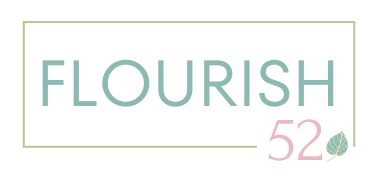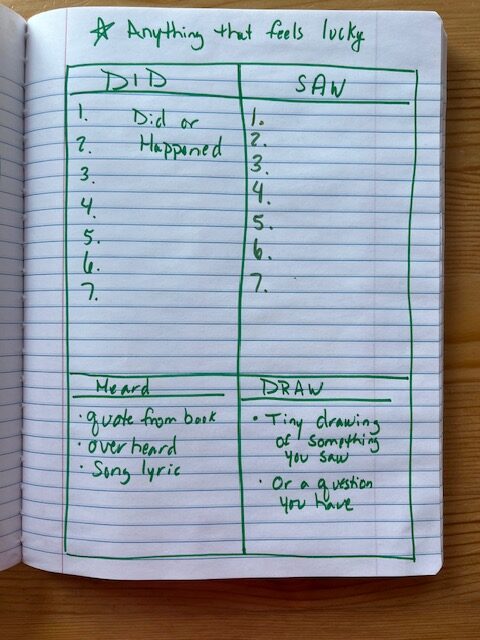Last week I introduced the How to Be Lucky Challenge.
Being lucky is a mindset and it’s one that we can learn.
Over the next few weeks, we’ll be covering these topics:
- Maximizing our chance opportunities
- Listening to our lucky hunches
- Expecting good fortune
- Turning bad luck into good
But before we can dive into each of those (which come from Richard Wiseman’s book, The Luck Factor), we need to talk a little about awareness, attention and our brains.
How we pay attention creates our world.
“Attention changes what kind of a thing comes into being for us: in that way it changes the world.”
“The nature of the attention one brings to bear on anything alters what one finds…”
Both of those quotes come from the book The Master and His Emissary: The Divided Brain and the Making of the Western World by Ian McGilchrist.
In order to be lucky, we have to widen our attention. Most of us are pretty focused in life, thinking only of the task in front of us.
But lucky people have a broader awareness and wider attention. They notice more things, so they’re able to take advantage of opportunities and tap into their intuition by letting their subconscious pick up on patterns.
Richard Wiseman tells a story of an experiment in which they asked participants to self-identify as lucky or not. They told everyone that the experiment consisted of an interview. To get to the room where the interview was conducted, participants needed to walk down a hallway.
In the hallway, they’d placed money to see if the participants would find it. This was the real experiment. The money was there for everyone but not everyone saw it.
People who self-identified as lucky were much more likely to see the money than those who didn’t see themselves as lucky.
To be like the lucky people who found the money, we need to increase a certain type of attention.
Right Hemisphere Attention
According to the book, The Master and His Emissary, we have five types of attention: vigilance, sustained attention, alertness, focussed attention and divided attention.
The right hemisphere of the brain is responsible for every type of attention, except focussed attention.
Right brain attention is broad and flexible. It can see the whole picture and take in large amounts of information.
This is the type of attention we need to build in order to increase our luckiness.
Enter the Lucky Artifact
We need both a tool to help us build our right brain attention and also a way to keep track of this lucky experiment over the next few weeks.
The Lucky Artifact will be both this tool and record keeping system.
An artifact is:
1. An object made by a human being, typically an item of cultural or historical interest. 2. Something observed in a scientific investigation or experiment that is not naturally present but occurs as a result of the preparative or investigative procedure. New Oxford American Dictionary
Our Lucky Artifact is a notebook, but I like using the word artifact instead of notebook, because it distinguishes it from other journals.
The goal is to use the artifact to both build our awareness in our everyday lives and also record our luck as it happens.
The author and teacher Lynda Barry has a Review Frame method that works great for this. We’ll be adding one key part to her framework to serve our purposes.
It only takes 5-10 minutes, tops to fill out a page of this notebook. (See the video I made at the bottom of this post for more info.)
Divide the page in four parts. Label them “Did/Happened”, “Saw”, “Heard” and “Draw”. Alternatively, you could use the last section for a question you have.
Quickly write 5-7 things in the “Did” and “Saw” categories.
Jot down something you heard. This could be a song lyric, something you heard someone else say, something you said, a bird call etc.
Then draw one of the things you saw. You don’t need to do an accurate or difficult drawing. No one is judging your drawing ability. In fact, I think the funkier these little drawings turn out, the better. There’s something special that happens when we move our hand over the page to produce an image of something we’ve seen. It activates the same part of our brain that we’re trying to activate with this How to Be Lucky Challenge.
Now look over your page and place a star or checkmark by the things you think are lucky. Don’t overthink this. It may feel like a gratitude practice – that’s a good thing. You might want to make a little note about why it felt lucky.
Caveat
While we are actively naming things as lucky, we don’t want to over-do this. We definitely don’t want to name things as unlucky.
We’re using this tool of finding luck to build our awareness, and throughout the challenge we will also build positivity in our lives, tap into our intuition, do things out of our comfort zone, increase our social circles and work on resilience.
We don’t need to label everything in our lives as lucky and, like I mentioned, we don’t want to label things as unlucky.
There’s an old story that will help us keep things in balance. I love the way that Marilyn on the show Northern Exposure shares this story with Ed.
Week 1 Action
Get yourself a notebook to use for your Lucky Artifact. I like a composition notebook, but you can use any type that works for you.
Decide when you will do your page each day. If you already have a journaling practice, you can add this to it. Otherwise, sit the notebook by your coffee maker or on your nightstand, if you want to fill it in at night. Find a way to pair it with something you already do everyday, so that it helps build the habit.
Video of Lucky Artifact Notebook Set Up and Use
Here’s a video I made with more info on setting up and using your Lucky Artifact notebook.
One note: in the video I mention a Facebook group, but this doesn’t really exist yet.
I’d love to know your thoughts on all of this! Share in the comments below.


